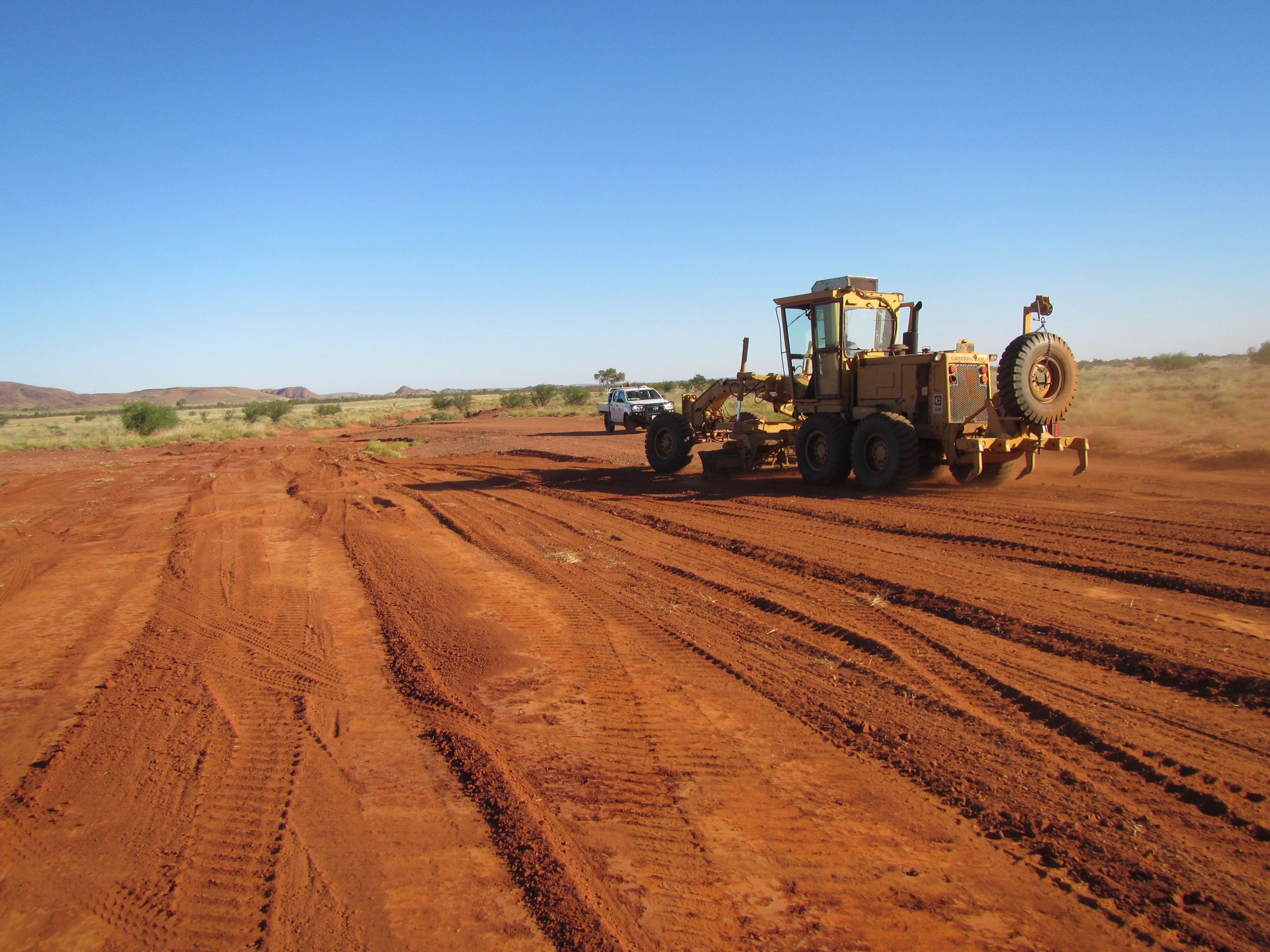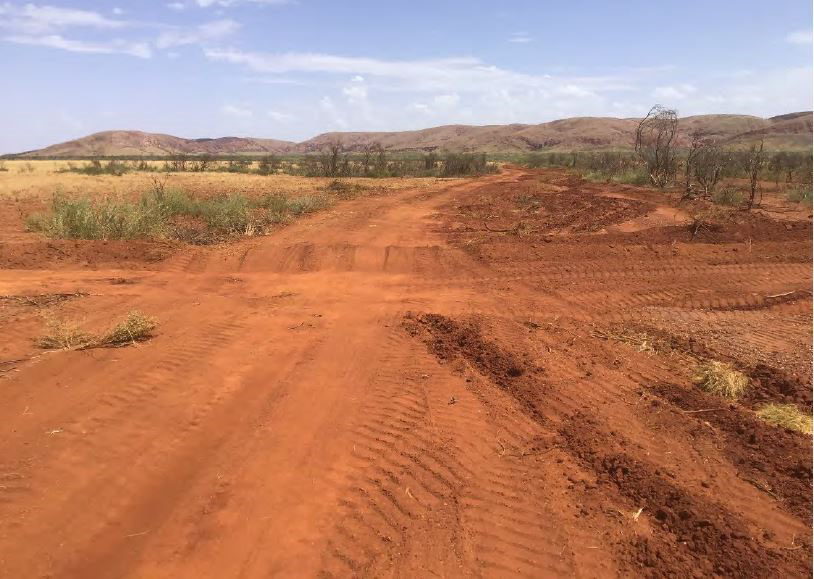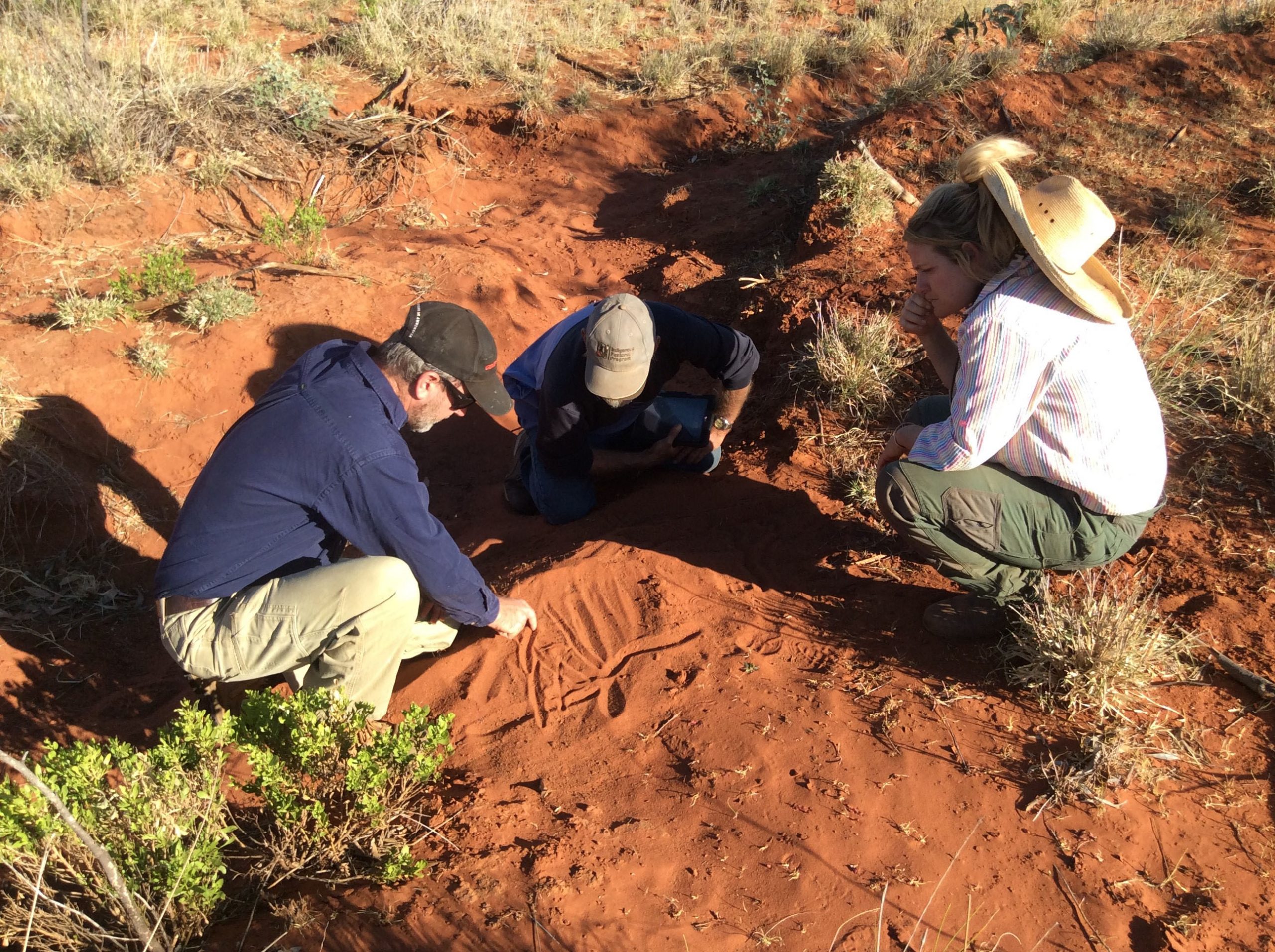Rehydrating the Pilbara

Col Stanton completing ripping and smoothing work, Yarrie Station.
In March 2020, Greening Australia completed Rangelands Rehydration works to improve conditions on Yarrie and Coongan Stations in the East Pilbara.
These works were funded by the National Landcare Program: Small Farms Small Grants – a scheme that provides support to projects that increase farming, forestry and fishing communities’ awareness, knowledge, skills and capacity to adopt best practice sustainable agriculture.
The Rangelands Rehydration process is an established method that has been applied across Australia since the mid 2000s. The key principles include slowing rainfall runoff, increasing water infiltration into soil, increasing groundcover plant density and regrowth, and restoring natural water movement patterns.
The primary purpose of works on Yarrie and Coongan was to slow the passage of water through the rangelands landscape for the purpose of erosion reduction, improved water holding, water harvest and water use efficiency to maintain long-term fertility, function and resilience of the station landscapes. It was also an opportunity to improve known habitats of local Greater Bilby populations listed as ‘Vulnerable’ under the Commonwealth EPBC act ( 1999).
The Rangelands NRM Regional Plan and the Pilbara Conservation Action Plan guided the regional prioritisation on Coongan and Yarrie stations after it was recognized that the De Grey River catchment contained significant production and conservation assets. It represented an opportunity to implement management actions to protect or improve the current condition.
Both Yarrie and Coongan Stations underwent Ecologically Sustainable Rangelands Management (ERSM) evaluation which identified the priority areas where rehydration earth works and erosion control structures were needed to restore critical areas of habitat.

Example of ripping, smoothing and ‘whoa boy’ construction at Coongan Station
Activities for this project were guided by extensive regional consultation and partnerships with relevant NRM organisations, scientific organisations and pastoral landholders.
Work undertaken:
- Planning and identifying best on ground strategy and works to remediate priority areas (informed by ESRM);
- Ripping, infilling and smoothing erosion gullies and eroded tracks;
- Surveying and constructing diversion banks and check banks to slow and divert water from erosion gullies;
- Surveying and constructing “woah boys” to divert water from currently used station tracks; and
- Identifying monitoring sites within remediated areas and capture baseline data using the Rangelands Monitoring Tool.
What is a ‘woah boy’?
Woah boys are constructed to divert water off tracks without causing erosion and allowing vehicles or people to cross over them.
Critical to measuring success of the project, baseline monitoring sites were established at 19 remedial sites on Yarrie and Coongan Station. Monitoring data was collected using the Gascoyne Catchment Groups Rangelands Monitoring Tool.

Rehydration Team undertaking critical site planning, Yarrie Station
All Rehydration earthworks were completed by December 2019 prior to onset of seasonal summer rains. Achieving this timeline was critical to the project as it is intended that remedial work will improve the hydrological regime to areas currently starved of water due to erosion, increased water filtration, improved pasture growth and reduced soil runoff. This will have positive impacts on local ecology grazing and productivity at both Yarrie and Coongan Station.